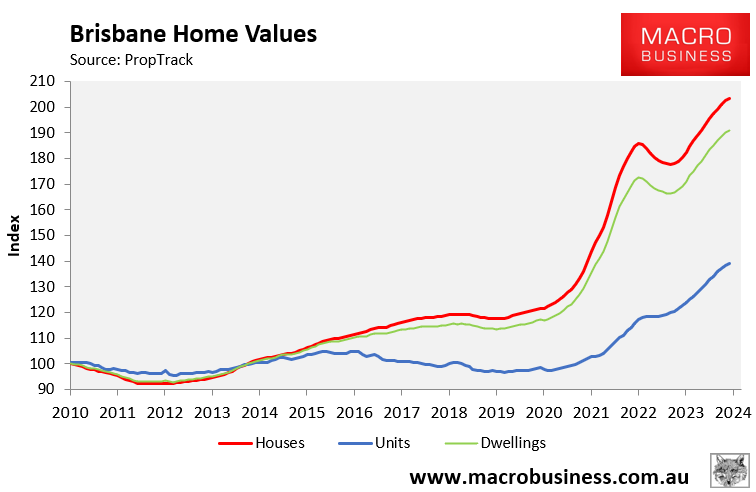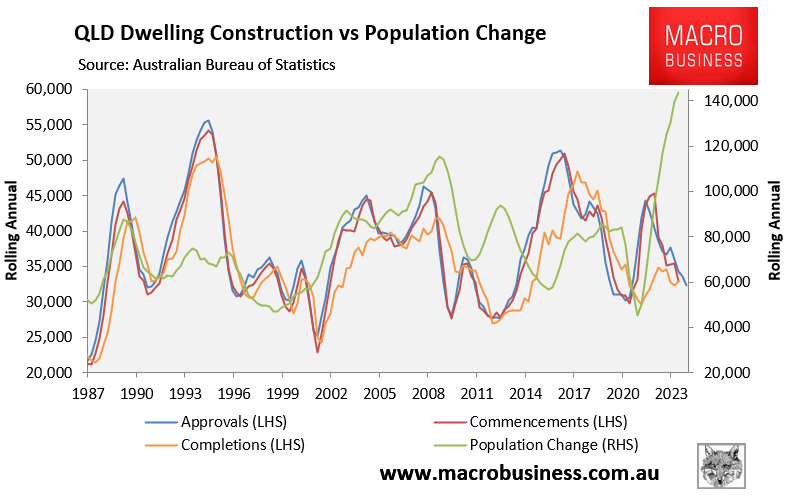The latest results from PropTrack show that Brisbane dwelling values have soared by 63% since the start of the pandemic in March 2020:

The price appreciation is so extreme that Brisbane’s median dwelling value is now on par with Melbourne’s and will soon surpass it:

The Oxford Economics Residential Property Prospects report, released this week, tips that Brisbane’s house price boom will continue, with median house values to rise another 18% by mid-2027, with unit values tipped to rise by 21%.
“It’s very much a demand exceeding supply story”, Oxford Economics senior economist Maree Kilroy said.
“Demand fundamentals are expected to remain strong, with Queensland positioned at the front of the pack in terms of population growth”.
“Brisbane has a lot of infrastructure being built, and it’s got the Olympics, so optimism around potential returns for investment is quite bright”.
PropTrack economist Eleanor Creagh agrees that the undersupply will continue to drive Brisbane price growth.
“While the expectation remains that rates will move lower later this year, we continue to see that demand/supply imbalance and prices continuing to rise in the months ahead”, she said.
The following chart illustrates Brisbane’s housing shortage:

Queensland’s population grew by 143,600 in the year to September 2023 against annual dwelling approvals of 32,300 in the year to February 2024.
That suggests that only around one home is approved for construction for every 4.5 new residents at the state level.
The supply situation is even worse for Brisbane.
Only 17,740 dwellings were approved for construction across Brisbane in the year to February 2024, versus an increase in Brisbane’s population of 81,200 in the year to June 2023 (latest available date).

That suggests that only around one home is approved for construction for every 4.6 new residents at the capital city level.
Clearly, Brisbane is facing an extreme housing shortage, which will place further upward pressure on prices and rents.
The Reserve Bank’s next interest rate easing cycle, likely commencing late this year, will also provide further stimulus to house prices by increasing borrowing capacity.

